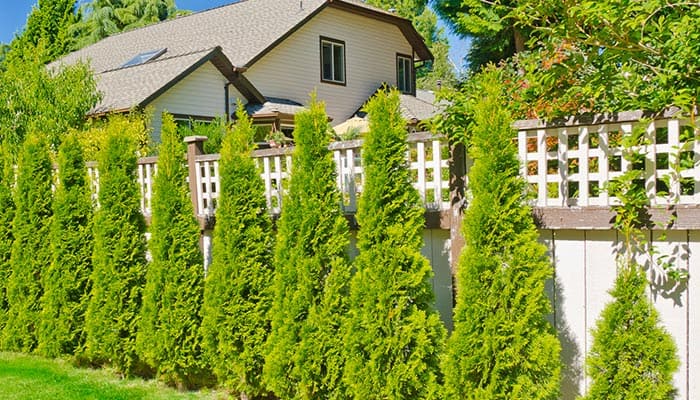 Whether you spend time in your East End home during the summer season or all year round, privacy is probably important to you. And it seems harder to come by all the time. There’s more traffic on the roads. The quiet of a weekend morning is often shattered by whining leaf blowers and buzzing lawnmowers. The right landscaping can give you more privacy. Plants can serve the same purpose as a fence or high wall, but they can do it in a softer, more attractive way.
Whether you spend time in your East End home during the summer season or all year round, privacy is probably important to you. And it seems harder to come by all the time. There’s more traffic on the roads. The quiet of a weekend morning is often shattered by whining leaf blowers and buzzing lawnmowers. The right landscaping can give you more privacy. Plants can serve the same purpose as a fence or high wall, but they can do it in a softer, more attractive way.
The first step is to identify which features of your neighborhood are intrusive and where you can place a barrier to block them from your property. Perhaps traffic and street noise are problematic, or maybe the neighbors have loud parties, or their megawatt outdoor lights shine into your bedroom window. You may want to screen from view your swimming pool or spa, or perhaps you just yearn to immerse yourself in a good book without feeling that the eyes of the world are upon you.
When you have identified the irritants and determined where you need to block them, you can consider the options. Be mindful of the amount of space available for your privacy planting and keep it in scale. If you want a hedge but have a small lot, you’ll need to seek out narrow, columnar plants such as Sky Pencil Japanese holly or Skyrocket juniper. If you need privacy primarily in summer, to screen your deck or patio, you could consider a seasonal planting of tall annuals—a row of hollyhocks or sunflowers, or bold, colorful tropicals such as canna lilies, palms, banana plants, elephant ears or trellised mandevilla vines.
Planting Approaches
Depending on the sort of privacy you desire, the style of your home and your existing landscape features, you can install a formal clipped hedge, an informal or naturalistic screen or hedgerow, or perhaps some strategically placed specimen trees or shrubs.
Hedges: A formal hedge is a dense row of plants growing closely together and sheared regularly to maintain their smooth, straight lines. Clipped hedges are most at home in formal landscapes, where neat geometries of space and form create a serene, controlled look. In addition to affording privacy, formal hedges can act as windbreaks, define property lines, serve as the walls of garden rooms or provide a green backdrop for a flower or rose garden placed to the south of it. A privacy hedge should be at least 5 feet high; many streetside hedges are far taller than that. In addition to the ubiquitous privet, formal hedging plants include cherry laurel, arborvitae (although deer will eat them in unfenced locations), and hollies, though they grow more slowly. Yews are classics but are, unfortunately also deer magnets in unfenced locations.
Screens: Plants in informal screens are allowed to assume their natural habits and may billow and fountain, creating a softer, more natural look. Informal screens provide privacy without need for the meticulous maintenance required by a formal hedge. Selective pruning once or twice a year to keep the plants looking neat and remove any dead or damaged growth should be sufficient. Good plants for screening include Leyland cypress, junipers, hollies, white spruce and flowering shrubs such as forsythia, spiraea and rose of Sharon.
Respect Boundaries
When planning for a hedge or screen along property lines, it is essential to know exactly where your property lines lie and to make sure that your plants will not go beyond them when fully mature. Use your property survey to make sure. You will also need to know the locations of underground electric lines, television cables or water pipes so you can avoid them when digging planting holes.
With careful planning and thoughtful plant choices, the right landscaping can help you secure the peace and privacy that seems ever more elusive.








